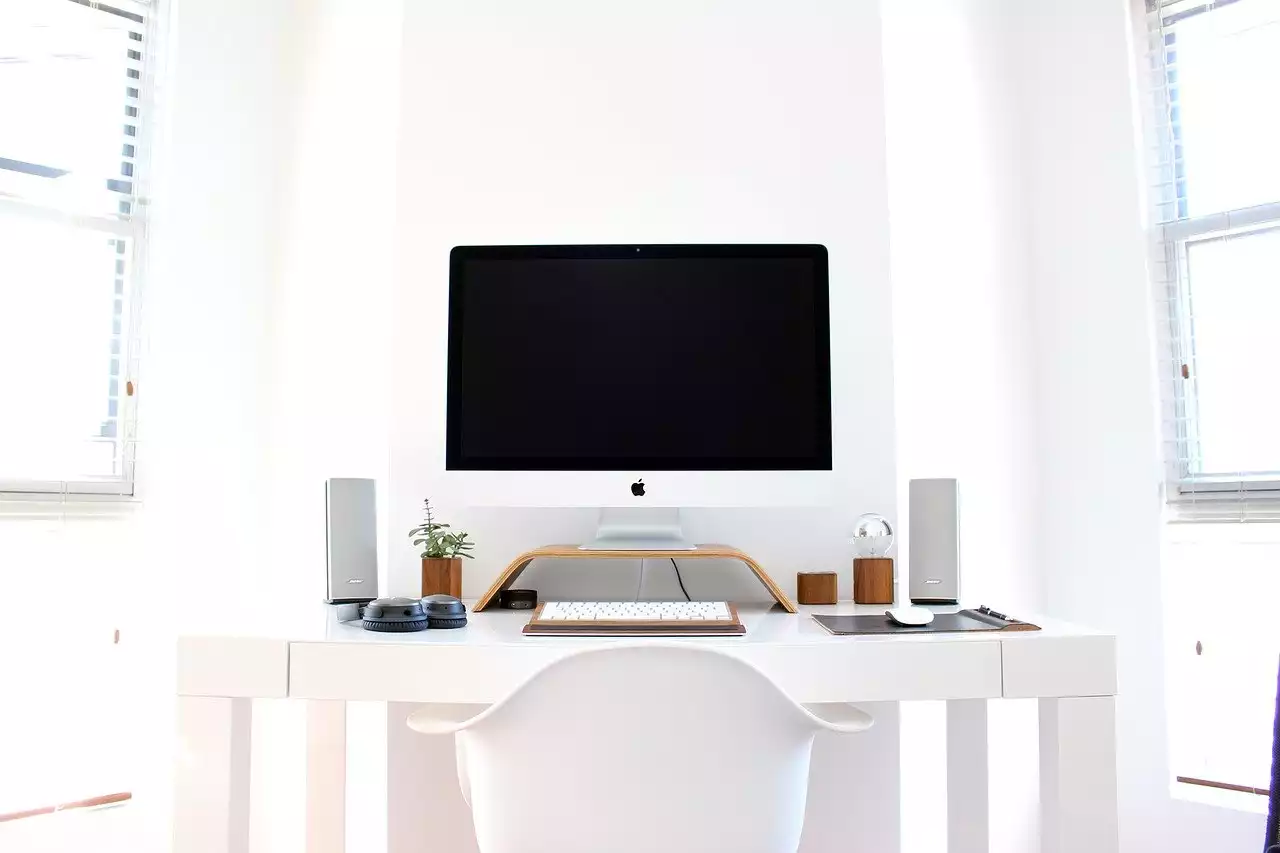The dangers of an improper workspace
Working from home can be a great way to enjoy a more flexible schedule, save money on gas and other expenses, and avoid the stress of commuting. However, if you're not careful, it can also lead to serious health problems. One of the biggest dangers of an improper workspace is poor posture. When you sit or stand for long periods of time, it can cause strain on your neck, shoulders, back, and legs. This can lead to aches and pains, as well as more serious conditions like carpal tunnel syndrome and tendinitis.
Another danger of an improper workspace is eye strain. When you work on a computer for long periods of time, it can cause your eyes to become dry, irritated, and fatigued. This can lead to headaches, blurred vision, and even more serious eye problems like macular degeneration.
Finally, an improper workspace can also lead to mental health problems. When you're working from home, it can be hard to separate your work life from your personal life. This can lead to feelings of isolation, loneliness, and depression. Additionally, if you're not comfortable in your workspace, it can lead to stress and anxiety.
The benefits of an ergonomic workspace
On the other hand, creating an ergonomic workspace can have a number of benefits. First and foremost, it can help you avoid the health problems associated with an improper workspace. By designing your workspace in a way that promotes good posture and reduces physical strain, you can minimize the risk of aches, pains, and other health problems.
Additionally, an ergonomic workspace can also improve your productivity. When you're comfortable and not distracted by physical discomfort or pain, you can focus better on your work and get more done in less time. This can lead to a greater sense of accomplishment and satisfaction with your work.
Finally, an ergonomic workspace can also improve your mental health. When you feel comfortable and supported in your workspace, you're more likely to feel positive and motivated about your work. This can lead to a greater sense of fulfillment and happiness in your career.
Ergonomic workspace statistics
If you're still not convinced that creating an ergonomic workspace is important, consider these statistics:
- According to the Occupational Safety and Health Administration (OSHA), work-related musculoskeletal disorders (WMSDs) are one of the most common workplace injuries, affecting millions of workers each year.
- The American Academy of Ophthalmology reports that up to 90% of people who work on a computer experience eye strain.
- A study by the American Psychological Association found that workers who reported high levels of job stress were more likely to experience physical health problems like back pain, headaches, and fatigue.
The basics of ergonomics: posture, lighting, and equipment
Now that you understand the importance of creating an ergonomic workspace, let's delve into the basics. There are three key factors to consider when designing your workspace: posture, lighting, and equipment.
Posture is perhaps the most important factor to consider when creating an ergonomic workspace. Whether you're sitting or standing, it's important to maintain good posture to avoid strain on your muscles and joints. When sitting, make sure your feet are flat on the ground and your back is straight. Your arms should be relaxed at your sides, and your keyboard and mouse should be at a comfortable height. When standing, make sure you're standing upright with your feet shoulder-width apart. Your shoulders should be relaxed, and your elbows should be bent at a 90-degree angle.
Lighting is also important when creating an ergonomic workspace. Make sure your workspace is well-lit to avoid eye strain. Avoid glare by positioning your computer screen away from windows or other bright sources of light. You may also want to consider investing in a task light to provide additional lighting for your workspace.
Finally, equipment is another important factor to consider. Make sure your chair is comfortable and provides adequate support for your back. Your desk should be at a comfortable height, and your computer monitor should be at eye level. If you use a laptop, consider investing in a separate keyboard and mouse to allow for a more comfortable typing position.
Choosing the right furniture for an ergonomic workspace
When it comes to creating an ergonomic workspace, choosing the right furniture is key. Here are some tips to keep in mind:
- Look for a chair that provides good lumbar support and allows you to adjust the height and tilt.
- Choose a desk that is at a comfortable height for your arms and allows you to maintain good posture.
- Consider investing in a monitor arm or stand to position your computer monitor at eye level.
- If you're using a laptop, consider investing in a separate keyboard and mouse to allow for a more comfortable typing position.
Remember, the key is to create a workspace that allows you to maintain good posture and avoid physical strain.
Creating a standing desk setup
Standing desks have become increasingly popular in recent years, and for good reason. They can help you avoid the health problems associated with sitting for long periods of time, improve your posture, and increase your energy levels. Here are some tips for creating a standing desk setup:
- Look for a standing desk that allows you to adjust the height to a comfortable level.
- Use an anti-fatigue mat to reduce strain on your feet and legs.
- Consider investing in a monitor arm or stand to position your computer monitor at eye level.
- Use a wireless keyboard and mouse to allow for a more comfortable typing position.
Remember, it's important to ease into using a standing desk to avoid muscle fatigue and other health problems.
How To BUILD a Standing Desk | Building Convertible Electric Workstation For Easy DIY Stand Up Desks
Tips for setting up your ergonomic workspace at home
Now that you understand the basics of creating an ergonomic workspace, here are some tips to help you set up your home office:
- Start with a comfortable chair that provides good lumbar support and allows you to adjust the height and tilt.
- Choose a desk that is at a comfortable height for your arms and allows you to maintain good posture.
- Position your computer monitor at eye level to reduce strain on your neck and shoulders.
- Use a separate keyboard and mouse to allow for a more comfortable typing position.
- Make sure your workspace is well-lit to avoid eye strain.
- Take breaks throughout the day to stand up, stretch, and move around.
Common mistakes to avoid when setting up your workspace
When setting up your ergonomic workspace, there are some common mistakes to avoid. These include:
- Using a chair that doesn't provide adequate support for your back.
- Choosing a desk that is too high or too low for your arms.
- Positioning your computer monitor too high or too low.
- Using a keyboard and mouse that are uncomfortable or don't allow for a natural typing position.
- Working in a poorly lit space that causes eye strain.
By avoiding these common mistakes, you can ensure that your ergonomic workspace is as comfortable and supportive as possible.
Ergonomic workspace gadgets to consider
Finally, there are a number of ergonomic workspace gadgets that can help you maximize your comfort and productivity. Here are some to consider:
- A monitor arm or stand to position your computer monitor at eye level.
- A wireless keyboard and mouse to allow for a more comfortable typing position.
- An anti-fatigue mat to reduce strain on your feet and legs.
- A task light to provide additional lighting for your workspace.
- A footrest to promote good posture and reduce strain on your back and legs.
Remember, the key is to choose gadgets that will help you maintain good posture and avoid physical strain.











